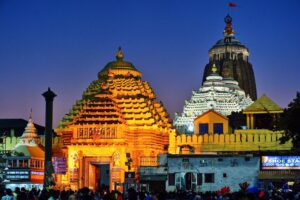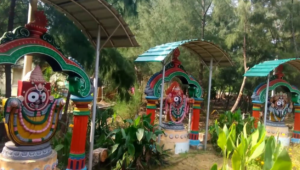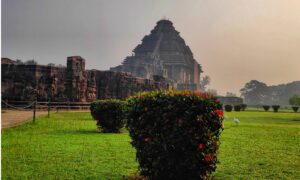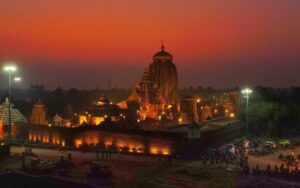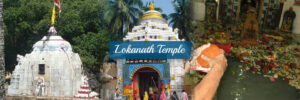Udayagiri and Khandagiri Caves: A Journey into the Past
If you are fascinated by ancient history and culture, then you should not miss visiting the Udayagiri and Khandagiri Caves in Bhubaneswar, Odisha. These caves are partly natural and partly artificial, and date back to the 2nd century BCE. They were carved out by the Jain monks and followers of King Kharavela, who ruled over the Kalinga kingdom. The caves are a treasure trove of art, architecture, and inscriptions, and offer a glimpse into the life and times of a bygone era.
The Udayagiri and Khandagiri Caves are located on two adjacent hills, about 7 km from Bhubaneswar. Udayagiri means “Sunrise Hill” and has 18 caves, while Khandagiri means “Broken Hill” and has 15 caves. The caves are also known as Lena or Leṇa in the inscriptions, which means “residence”. The caves are numbered according to their location and orientation.
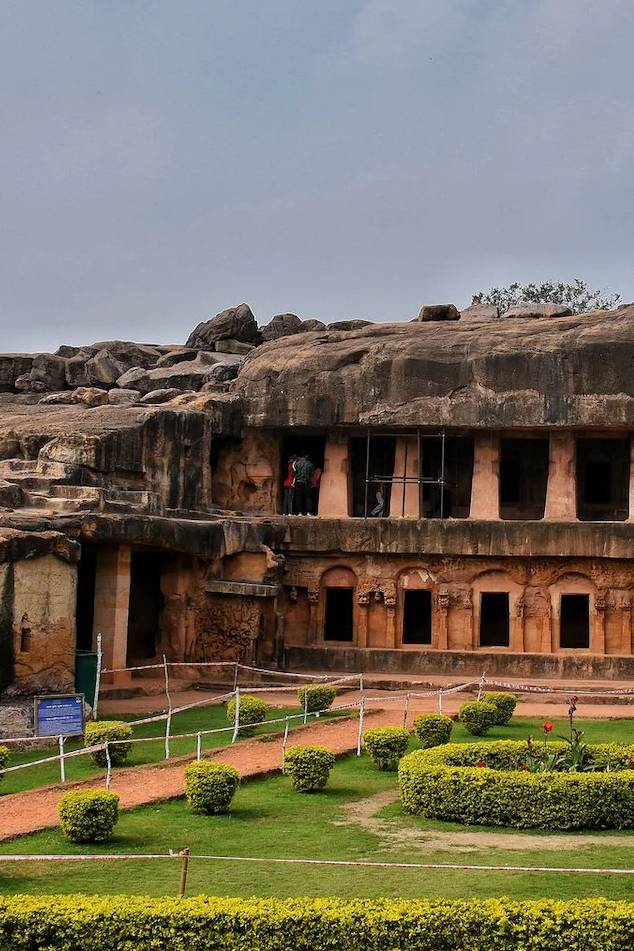
Some of the most prominent caves in Udayagiri are:
- Hathigumpha: This is the largest and most famous cave in Udayagiri. It has a huge arched doorway with an elephant carving on top. It also has a 17-line inscription in Brahmi script, which narrates the exploits of King Kharavela. The inscription is considered to be one of the earliest historical records of India.
- Rani Gumpha: This is a double-storeyed cave with elaborate carvings and sculptures. It has a spacious courtyard with cells on three sides. The walls and pillars depict scenes from Jain mythology, such as the life of Mahavira, the 24 Tirthankaras, and the dreams of Queen Trishala.
- Ganesha Gumpha: This cave is named after a carving of Ganesha on its doorway. It has two cells with verandahs. The walls have carvings of animals, flowers, humans, and divine beings. One of the panels shows a scene of a royal procession with elephants, horses, and chariots.
- Ananta Gumpha: This cave is named after a carving of Ananta, the serpent king, on its doorway. It has four cells with verandahs. The walls have carvings of animals such as lions, bulls, elephants, monkeys, and geese.
Some of the most prominent caves in Khandagiri are:
- Ananta Gumpha: This is a different cave from the one in Udayagiri. It has three cells with verandahs. The walls have carvings of animals such as lions, tigers, elephants, boars, and snakes.
- Navamuni Gumpha: This cave has nine cells with verandahs. The walls have carvings of nine Jain sages or munis, who are identified by their names and symbols.
- Barabhuji Gumpha: This cave has a single cell with a verandah. The wall has a carving of a four-armed female figure holding a lotus, a conch, a wheel, and a weapon. She is identified as Barabhuji or Dharini, a form of Goddess Lakshmi.
- Tatowa Gumpha: This cave has two cells with verandahs. The walls have carvings of parrots or tatowas, hence the name. One of the parrots holds a human head in its beak, which is believed to be a depiction of King Nanda, who was killed by King Kharavela.
The Udayagiri and Khandagiri Caves are open from 9 am to 6 pm every day. The entry fee for Indian citizens is Rs. 15 per person, while for foreign nationals it is US $ 2 per person. Children up to 15 years are free of charge. You can also visit the Archaeological Museum near the caves, which displays various sculptures and artefacts recovered from the site.
The Udayagiri and Khandagiri Caves are a must-visit destination for anyone interested in ancient history and culture. They showcase the artistic and architectural skills of the Jain monks and the glory of King Kharavela’s reign. They also offer a serene and spiritual atmosphere for meditation and contemplation.
